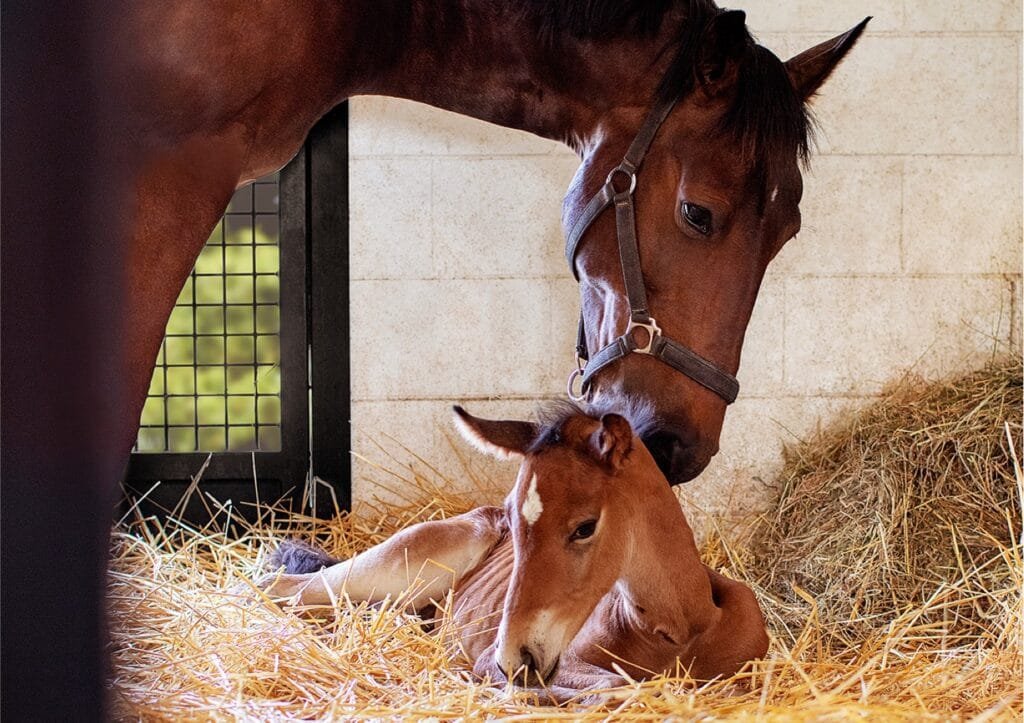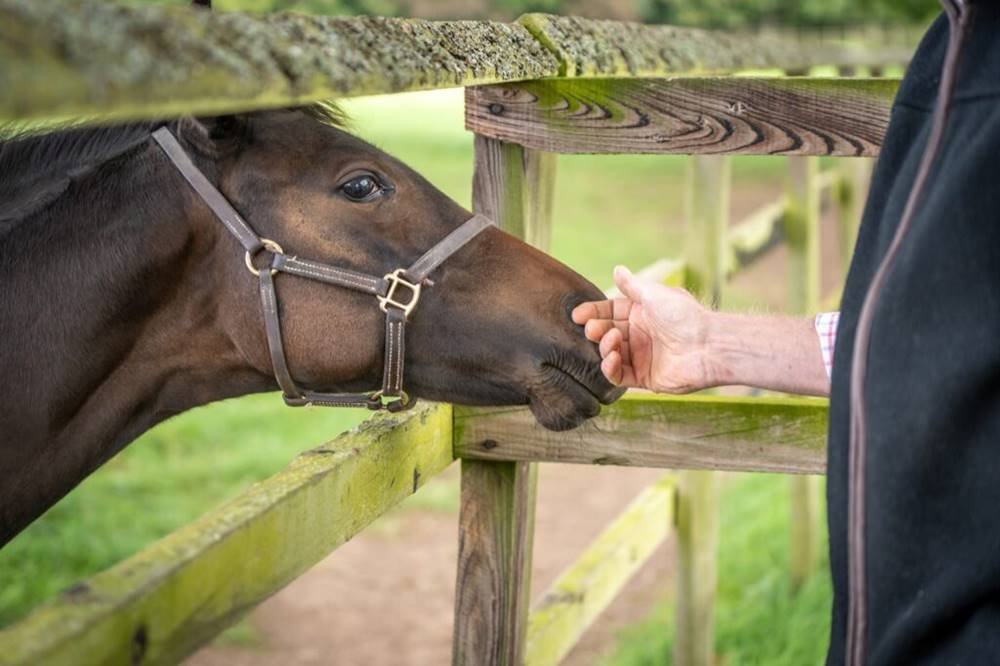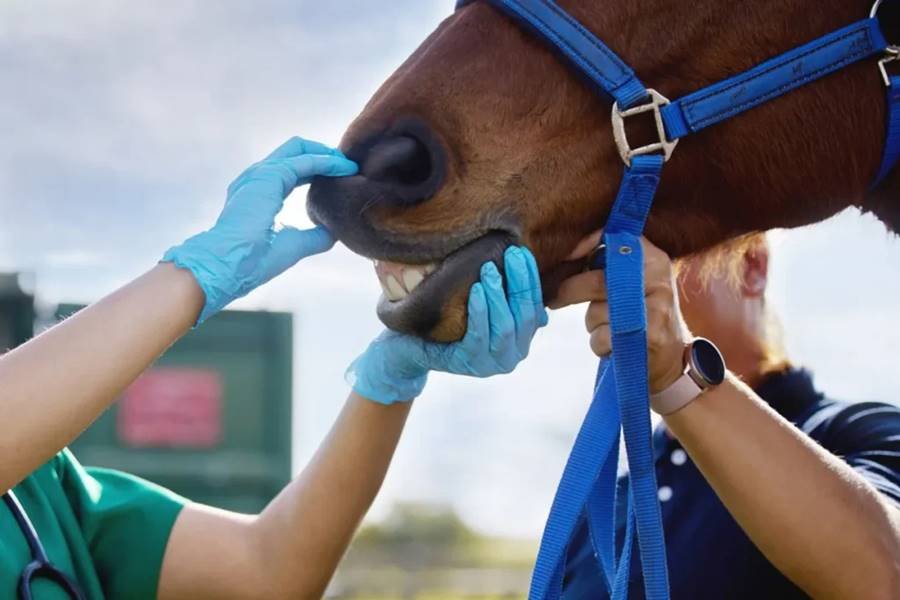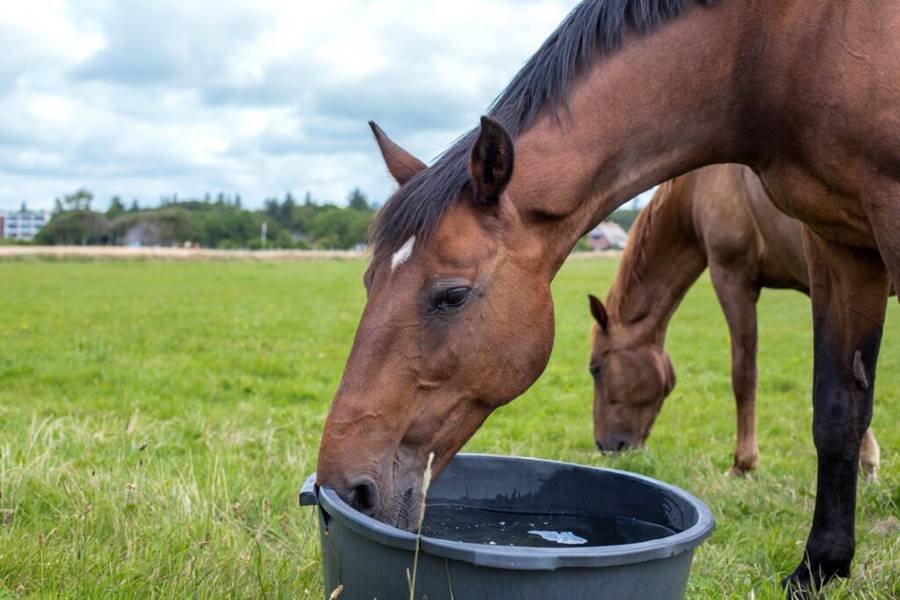Foaling season is an exciting and critical time for horse owners and breeders.
It marks the arrival of new life and the beginning of a new journey. Preparing properly can ensure the health and safety of both the mare and her foal. Here’s what to expect during foaling season and how you can help.
Understanding the Foaling Process
Foaling is the process of a mare giving birth to a foal. It typically occurs after a gestation period of around 11 months. Understanding the stages of labor and what to expect can help you be prepared:
Foaling Process
- Preparation: In the days leading up to foaling, the mare may show signs such as restlessness, frequent urination, and changes in her appetite. Her udder will begin to fill with milk, and you might notice the appearance of waxy droplets on her nipples.
- Stage One: This stage can last from a few hours to a day. The mare may become more anxious and exhibit signs of discomfort. She might lie down, get up frequently, and show signs of colic. It’s essential to monitor her closely during this time.
- Stage Two: This is the actual birth, which usually lasts about 20 to 30 minutes. The mare will lie down, and you may see the amniotic sac and the foal emerging. It’s crucial to give the mare space but stay nearby in case assistance is needed.
- Stage Three: After the foal is born, the mare will deliver the placenta. This stage is important as retention of the placenta can lead to serious health issues.
Preparing for Foaling Season

To ensure a smooth foaling process, preparation is key. Here’s how to get ready:
1. Create a Safe Foaling Environment
- Foaling Area: Designate a clean, quiet, and safe space for the mare to give birth. This could be a clean stall with non-slip flooring and adequate bedding.
- Fencing: Ensure the fencing is secure to prevent the mare from escaping or getting injured.
- Comfort Items: Provide comfortable bedding, such as straw or shavings, to help the mare feel secure.
2. Gather Essential Supplies
Having the right supplies on hand can make the process smoother:
- Foaling Kit: Prepare a foaling kit that includes:
- Clean towels for drying the foal.
- A bucket for washing hands.
- A scalpel or scissors for cutting the umbilical cord, if necessary.
- Iodine for disinfecting the umbilical stump.
- Colostrum replacer or supplement for the foal, if needed.
- Gloves for hygiene.
3. Monitor the Mare
As the foaling date approaches, keep a close eye on the mare:
- Daily Checks: Observe her behavior and physical changes. Take note of any signs of labor.
- Weight and Condition: Regularly check her weight and overall health. A veterinarian can help assess if she is in good condition for foaling.
4. Have a Vet on Standby
It’s wise to have a veterinarian on call during foaling season. They can provide guidance and assistance if any complications arise. Discuss your foaling plan with them beforehand, including when to call for help.
What to Expect After Foaling

Once the foal is born, there are several important steps to ensure both mare and foal remain healthy:
1. Immediate Care for the Foal
- Breathing: Ensure the foal is breathing normally. If not, gently clear its nose and mouth.
- Standing and Nursing: Foals should stand and nurse within the first hour. Monitor to make sure it gets colostrum, which is vital for immunity.
2. Mare Care
- Check the Placenta: Ensure the mare expels the placenta within a few hours. If not, contact a veterinarian.
- Post-Delivery Monitoring: Keep an eye on the mare for signs of distress or complications, such as excessive bleeding or signs of colic.
3. Follow-Up Vet Care
Schedule a veterinary checkup for both the mare and foal within a few days after birth. The vet will check for any health concerns and ensure the foal is developing properly.




